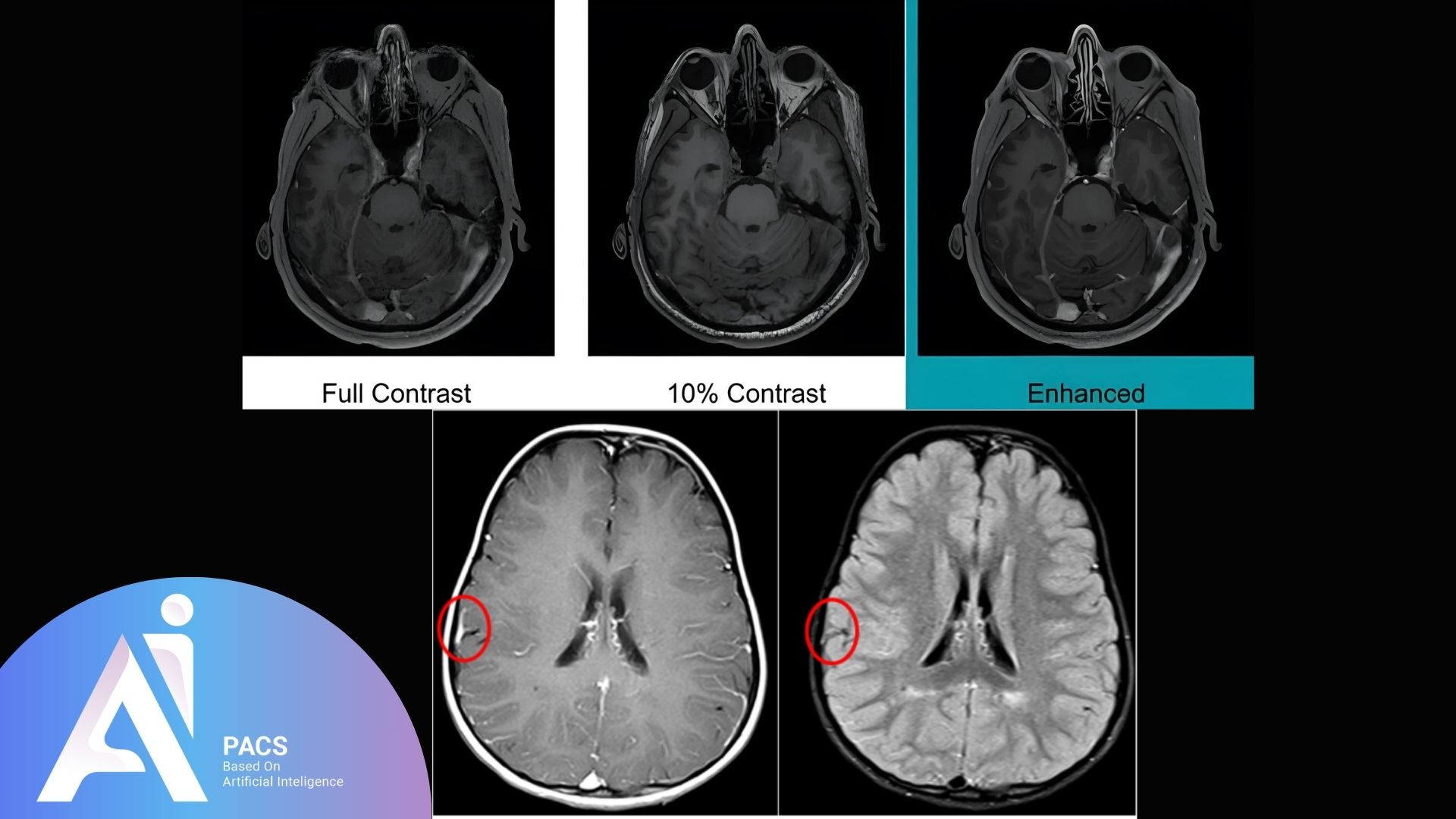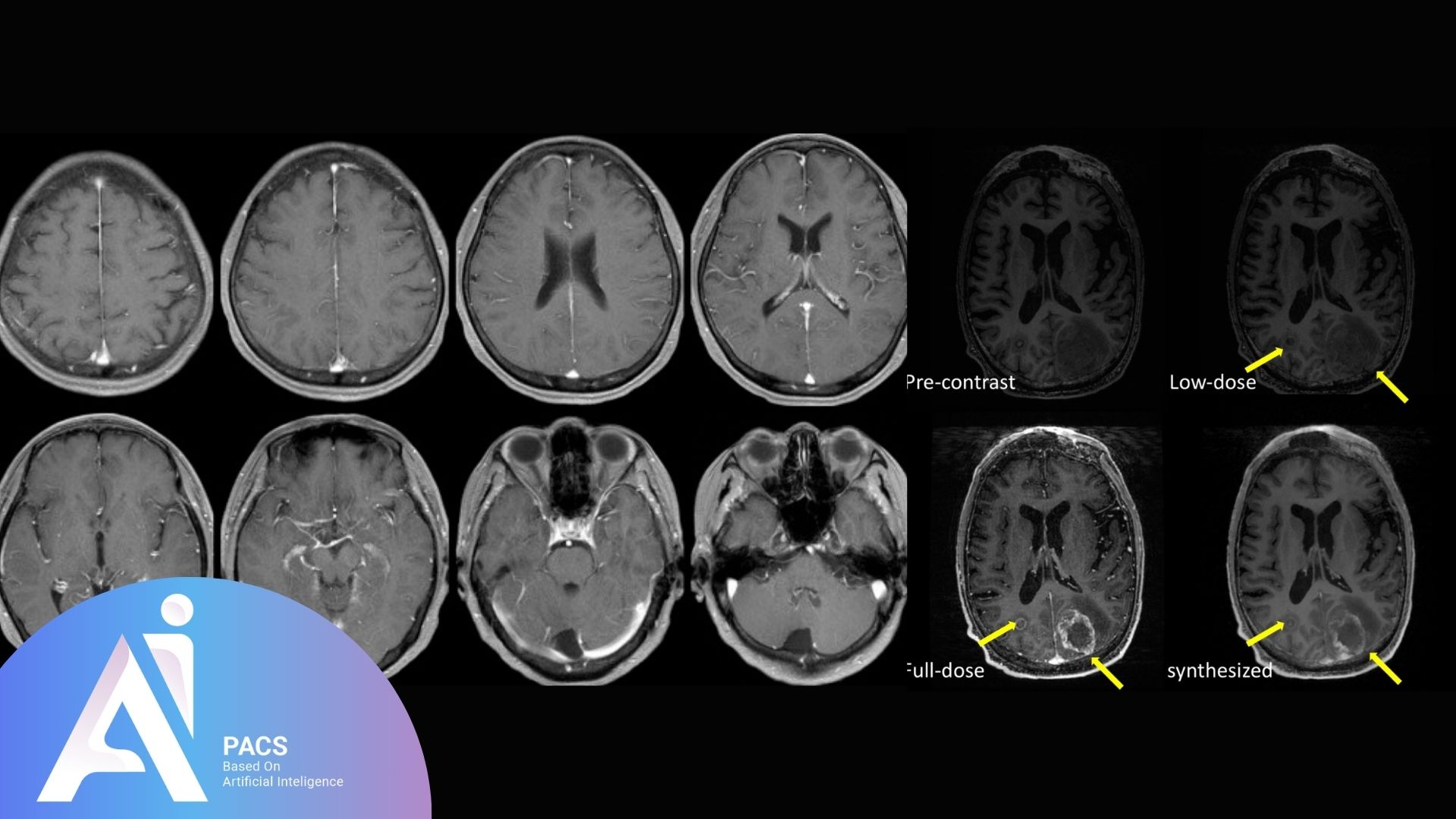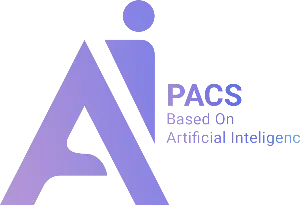Importance of contrast in MRI
Contrast agents play a crucial role in enhancing the diagnostic capabilities of Magnetic Resonance Imaging (MRI). They improve the visibility of internal structures, helping radiologists differentiate between healthy and abnormal tissues. By providing greater detail in images, contrast agents facilitate the identification of tumors, inflammation, and vascular issues, leading to more accurate diagnoses and treatment planning. Furthermore, they enable the assessment of complex anatomical regions and conditions, making MRI a vital tool in modern medicine.
What is Contrast Enhancement?
Contrast enhancement in MRI refers to using contrast agents to improve the clarity and detail of images the MRI machine produces. These agents, typically containing gadolinium, alter the magnetic properties of nearby tissues, allowing for better differentiation between various structures in the body. When injected into the bloodstream, contrast agents enhance the visibility of blood vessels and highlight areas of abnormal tissue, such as tumors or lesions. This enhancement helps radiologists assess the extent of diseases, monitor treatment responses, and make informed clinical decisions.
👉 Have an MRI report and need clarity? Upload your MRI report now for professional analysis and a trusted second opinion.

Mechanism of Contrast Enhancement
Contrast enhancement in MRI relies on introducing contrast agents that alter the magnetic properties of tissues, allowing for improved image contrast and resolution. These agents are typically paramagnetic, meaning they possess unpaired electrons that influence the magnetic field within the MRI scanner. When administered, contrast agents reduce the T1 relaxation time of nearby tissues, leading to brighter images of the areas they highlight. This mechanism helps differentiate between normal and pathological tissues, enhancing diagnostic accuracy.
How contrast agents work
Contrast agents work by altering the local magnetic environment in tissues where they accumulate. Upon injection, the agents’ paramagnetic properties affect the relaxation times of protons in the surrounding tissues. Specifically, they shorten the T1 relaxation time, which leads to increased signal intensity in the images obtained. This enhancement allows for clearer blood vessels, organs, and lesions visualization. The effectiveness of a contrast agent depends on its concentration, the timing of imaging after administration, and the specific tissue characteristics being examined.
Types of contrast agents used in MRI
Several types of contrast agents are commonly used in MRI, each with unique properties and applications:
- Gadolinium-Based Contrast Agents (GBCA)
- Gadolinium compounds are the most widely used contrast agents in MRI. They help enhance the signal of tissues by shortening T1 relaxation times.
- Examples include Gadopentetate dimeglumine (Magnevist) and Gadobutrol (Gadavist).
- Iron Oxide Nanoparticles
- These agents are primarily used for liver imaging and can provide specific enhancement in cases of hepatic lesions.
- They can also be utilized for assessing lymph nodes.
- Manganese-Based Agents
Manganese contrast agents are less commonly used and can offer different imaging characteristics, but they are being researched for specific applications.
- Emerging and Experimental Agents
Researchers are exploring new contrast agents, such as those based on perfluorocarbons and other novel materials, to improve safety and efficacy.
Clinical Applications
Contrast enhancement in MRI has a wide range of clinical applications, significantly improving the ability to diagnose and monitor various medical conditions. By enhancing the visibility of internal structures and abnormalities, contrast agents provide critical information that aids clinical decision-making. Here are some key areas where contrast-enhanced MRI is particularly valuable:
Identifying tumors and lesions
One of the primary applications of contrast-enhanced MRI is in identifying and characterizing tumors and lesions. Contrast agents help differentiate malignant tumors from benign lesions by highlighting vascularity and tissue composition differences. Enhanced imaging allows radiologists to assess tumors’ size, shape, and extent, providing essential information for treatment planning. Additionally, contrast enhancement can aid in detecting metastatic disease, facilitating a comprehensive evaluation of cancer spread within the body.
Evaluating vascular structures
Contrast-enhanced MRI is also crucial for evaluating vascular structures and assessing conditions such as aneurysms, vascular malformations, and occlusions. The introduction of contrast agents allows for detailed imaging of blood vessels, enabling clinicians to visualize blood flow dynamics and identify abnormalities. This application is particularly important in diagnosing conditions like stroke, where timely identification of vascular issues can significantly impact patient outcomes. Techniques such as Magnetic Resonance Angiography (MRA) utilize contrast enhancement to provide a clear view of arterial and venous systems.
Assessing inflammatory conditions
Another significant application of contrast enhancement in MRI is assessing inflammatory conditions, such as infections, autoimmune diseases, and chronic inflammatory disorders. Enhanced images can reveal areas of inflammation, edema, and changes in tissue structure, helping clinicians diagnose conditions like multiple sclerosis, rheumatoid arthritis, and infections such as abscesses. By highlighting these pathological changes, contrast agents improve the ability to monitor disease progression and response to treatment, guiding clinical management.
Common conditions requiring contrast enhancement
Contrast enhancement in MRI is particularly useful for diagnosing and evaluating several common medical conditions, including:
- Tumors and Neoplasms
- Brain Tumors: Enhances the delineation of tumor boundaries and surrounding edema.
- Liver Tumors: Distinguishes between malignant and benign lesions, such as hepatocellular carcinoma and metastases.
- Vascular Disorders
- Aneurysms: Visualization of vascular anatomy and size of aneurysms to assess rupture risk.
- Arteriovenous Malformations (AVMs): Helps to map the blood supply and drainage patterns.
- Inflammatory Conditions
- Multiple Sclerosis: Identifies active lesions in the brain and spinal cord by highlighting areas of inflammation.
- Rheumatoid Arthritis: Assesses joint inflammation and synovial thickening.
- Infections
-
- Abscesses: Enhances detecting and characterizing abscesses in various body regions.
- Osteomyelitis: Helps evaluate infection in bone and adjacent soft tissues.
- Cardiovascular Diseases
-
- Myocardial Ischemia: Evaluates perfusion and viability of heart muscle in patients with coronary artery disease.
- Congenital Heart Defects: Visualizes complex anatomical structures and blood flow patterns.
Guidelines for selecting contrast agents
Selecting the appropriate contrast agent for MRI involves considering several factors to optimize imaging outcomes while minimizing risks. Key guidelines include:
- Patient History and Medical Conditions
Evaluate the patient’s history of allergies, especially to gadolinium-based agents, and any history of kidney disease, as patients with renal impairment may be at risk for nephrogenic systemic fibrosis (NSF).
- Type of Imaging Study
Determine the specific MRI protocol and the anatomical region being examined. For example, certain agents may be preferred for brain imaging versus vascular studies.
- Indications for Contrast Use
Identify the clinical question being addressed. A gadolinium-based agent is typically used for tumors, while liver-specific agents may be preferred for hepatic lesions.
- Contraindications and Precautions
Consider contraindications such as severe kidney dysfunction or previous adverse reactions to contrast agents. Use alternative imaging methods if necessary.
- Dose and Administration Timing
Follow established protocols for dosage and timing of administration. Understanding the optimal timing for imaging after contrast administration can enhance image quality and diagnostic utility.
- Recent Developments and Alternatives
Stay informed about new contrast agents and techniques, including emerging products that may offer improved safety profiles or specific imaging benefits.
Want to know how FLAIR takes brain imaging to the next level? 🌟 Learn how this specialized MRI sequence helps uncover subtle abnormalities in the brain by suppressing cerebrospinal fluid signals. Read about FLAIR’s role in brain imaging here.

Limitations and Considerations
While contrast agents significantly enhance MRI’s diagnostic capabilities, there are important limitations and considerations regarding their use.
Potential risks and side effects of contrast agents
Patients receiving gadolinium-based contrast agents for MRI may face several risks and side effects. Allergic reactions can vary from mild symptoms like itching and hives to severe anaphylaxis, making pre-screening for allergies crucial. For those with severe renal impairment, there is a risk of developing nephrogenic systemic fibrosis (NSF), a serious condition characterized by skin thickening and fibrosis, necessitating careful consideration before administering contrast. Additionally, if the contrast agent leaks outside the blood vessel during injection, it can lead to localized swelling, pain, and tissue damage, highlighting the importance of proper injection techniques. Recent studies have also raised concerns about gadolinium retention in the body, especially in the brain, prompting ongoing research into the long-term effects and the necessity of using contrast agents in certain clinical scenarios.
Contraindications for use
Patients with severe renal impairment, specifically those with a glomerular filtration rate (GFR) below 30 mL/min, are at high risk for developing nephrogenic systemic fibrosis (NSF) and should generally avoid gadolinium-based contrast agents unless necessary. In the context of pregnancy and breastfeeding, the use of contrast agents must be approached with caution due to the unknown effects on fetal development. At the same time, gadolinium is typically considered safe for breastfeeding mothers, prompting discussions with healthcare providers about potential risks. Additionally, individuals with a documented history of severe allergic reactions to contrast agents should avoid their use. However, pre-medication may be employed for those with a history of milder allergic responses. Lastly, patients with thyroid dysfunction may face an increased risk of contrast-induced thyroid storm, especially when iodinated contrast agents are used. However, this concern is less relevant in MRI procedures using gadolinium.
Conclusion
Innovations in MRI contrast techniques are significantly enhancing medical imaging by improving diagnostic accuracy and patient safety. The development of gadolinium-free contrast agents and advanced methods like dynamic contrast-enhanced MRI and magnetic resonance angiography reduces the risks associated with traditional contrast use, especially for patients with renal impairment or allergies. Additionally, ultrasmall superparamagnetic iron oxide particles and quantitative imaging expand the range of conditions that can be assessed with greater precision. As these technologies evolve, they promise to provide clinicians with more detailed insights into patient health, ultimately improving diagnosis and treatment outcomes. Ensure your diagnosis is accurate and reliable. Upload your MRI, CT, or ultrasound report today for a comprehensive second opinion from our expert radiologists at AI-PACS.




